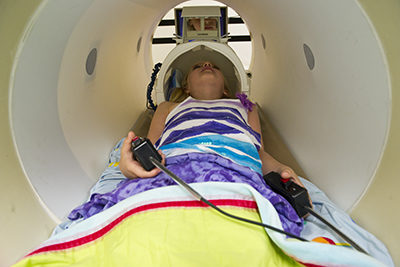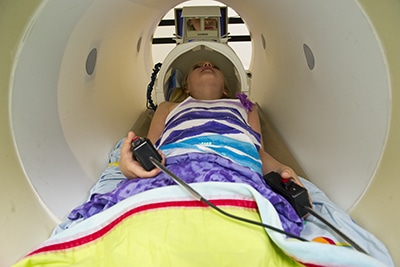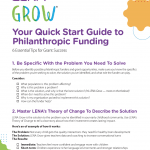
New research by a team at Harvard and MIT sheds light into the underlying neural mechanism that makes conversational turns — the back and forth interactions between children and their adult caregivers — so critical for early brain development.
The study, published in Psychological Science, used a combination of LENA technology and fMRI imaging to measure the relationship between language experience and brain activity in young children. When controlling for parental education and SES, “only conversational turns significantly predicted additional variance in verbal scores,” according to the paper, while the sheer number of adult words did not.
“Conversational turns are a measure of more than just the pure linguistic content, they are a measure of engagement,” said Rachel Romeo, a graduate student at MIT and Harvard, and lead author on the paper. “Obviously more conversational turns does mean more language overall, but it also means more child-directed language and more interactive language. It provides the sort of feedback loop between adult and child where the child learns to adapt their speech to the adult model and the adult learns how to talk to the child in the optimum way to advance their speech, but also so the child can understand. It’s kind of a catch all for both linguistic and interactional features.”
Rachel Romeo, the paper’s lead author, sat down with us to walk through her research and answer questions. Click below to watch the recorded webinar.
The study used fMRI imaging to correlate conversational turns with activation in Broca’s area of the brain, a well-known language center. To measure conversational turns, families were given two LENA devices and asked to record over a weekend. Romeo said having an automated way to measure conversational turns significantly facilitated gathering the data. (Click here to watch a video overview of the study from the McGovern Institute for Brain Research at MIT.)
“It’s a super comprehensive measure that you can get instantly. We thought about doing detailed transcriptions, but it’s incredibly time consuming. Using a video camera usually requires the presence of a researcher or you have to go to a lab, so there has been a big push recently to try to capture the natural environment,” Romeo said. “Having LENA means being able to follow families into their daily routines, ‘in the wild,’ so to speak. It was really invaluable to get that real-world experience.”
[quote]
The children who participated were between four and six years old. Romeo joked that getting them to sit still for the brain scans was one of the most challenging parts of the study.
“A lot of young children don’t have a strong sense of bodily awareness. You tell them to stay still and they think they’re being still, but they are literally waving their arms in the air,” Romeo said.
After the scans were complete, Romeo would show the kids the images of their brain on the monitor.
“We take them through and show them the various parts of the brain, and we can show them on their own brain. That’s their favorite part,” she said.
This study was one piece of Romeo’s dissertation work. The other component, which has also been submitted for publication, investigates the correlation between conversational turns and white matter connectivity between the two language regions in the brain. In the future, she plans to continue to study why conversational turns are so important by looking at how cognitive stimulation and language input affect children’s cognitive development in a variety of backgrounds and circumstances.
“I have a scientific and practical interest in it. I’ve read the landmark work of Hart and Risley, and knowing that there’s a relationship between language input and output means there’s got to be a neural mechanism involved. As a neuroscientist, it’s exciting to get some insight into what that mechanism is. On the more practical side, finding out which parts of the environment are most key for brain and language development helps us to design the most effective interventions to improve children’s outcomes,” Romeo said.
Read more on the study at MIT, Harvard, Scientific American, Science Trends, WBUR Boston, and The Boston Globe .
[about]




